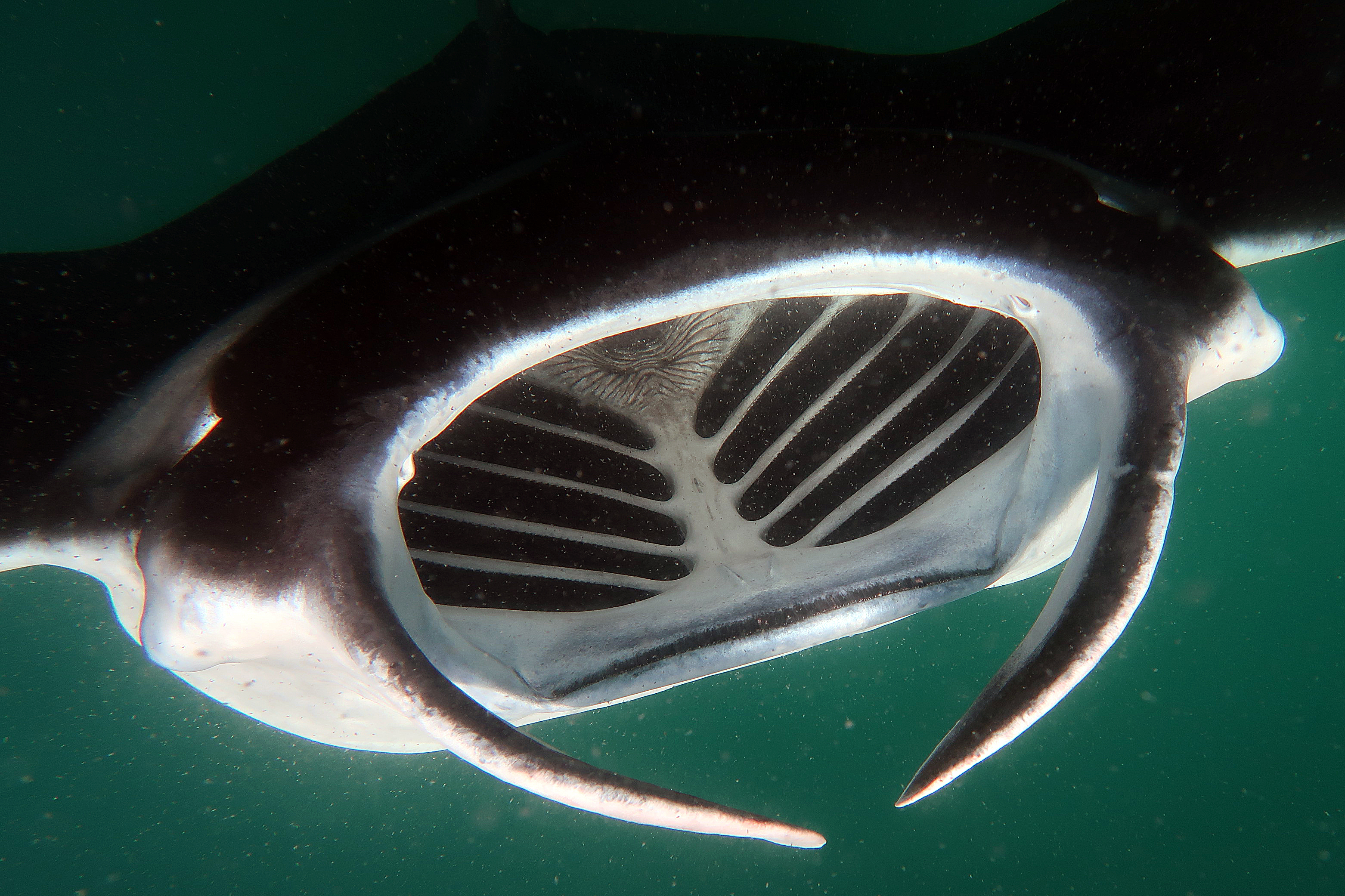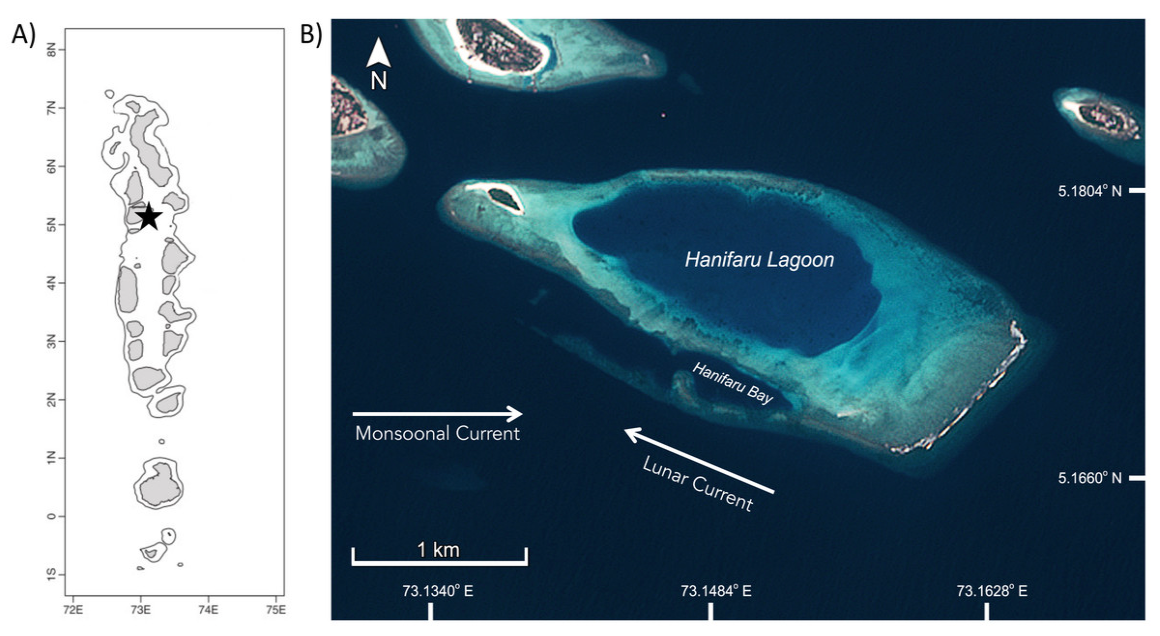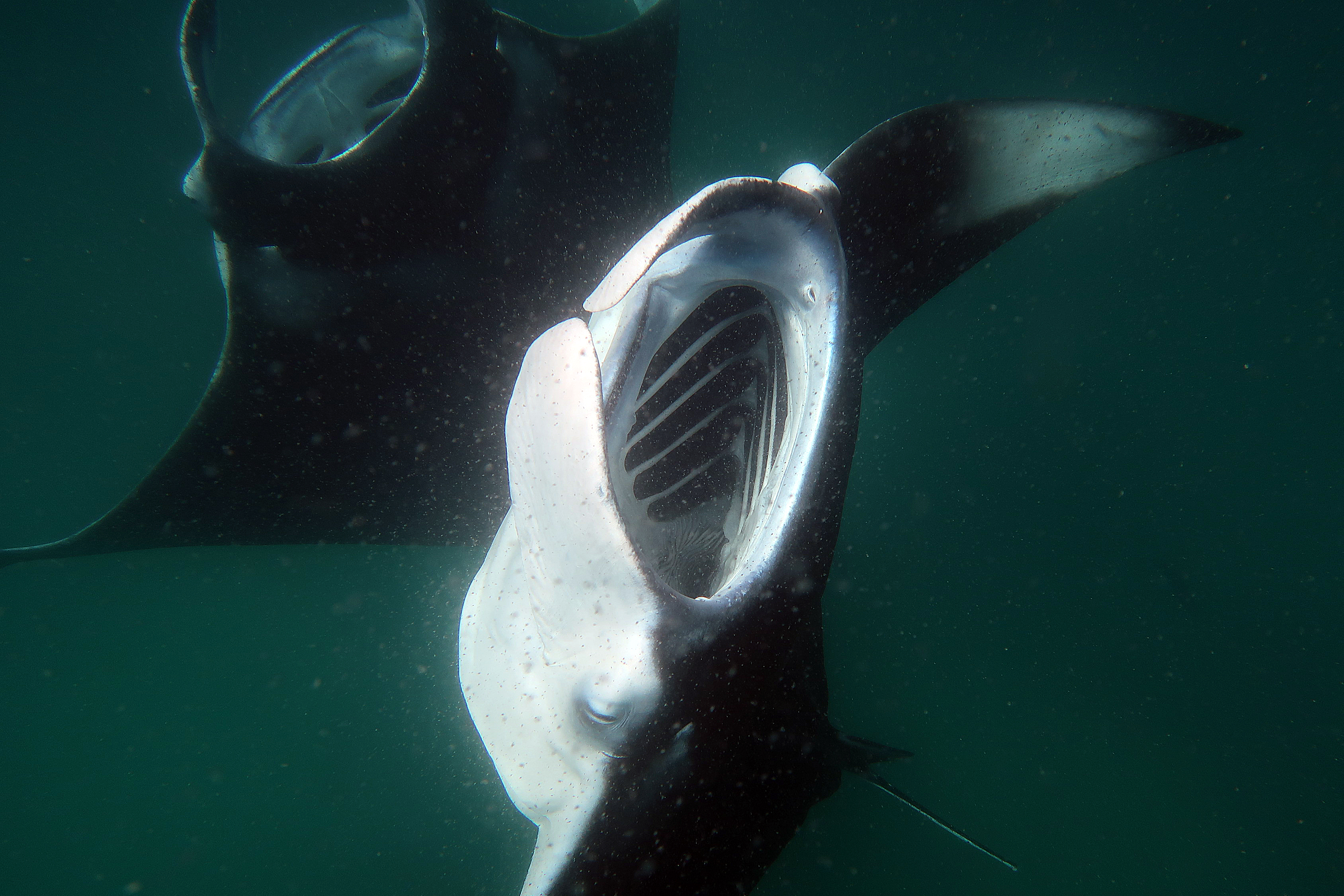PeerJ spoke to Asia Haines, a PhD Candidate at the School of Biomedical Sciences, University of Queensland about the recently published article Reef manta rays forage on tidally driven, high density zooplankton patches in Hanifaru Bay, Maldives
Can you tell us a bit about yourself?
I have recently submitted my PhD which focussed on the spatial ecology of manta rays, including their habitat use, movements and connectivity. I have been working with Project Manta in Australia since 2013, looking after their public outreach and engagement, and managing the manta rays sightings database on the east coast.
Can you briefly explain the research you published in PeerJ?
This study took place in Hanifaru Bay in the Maldives, the largest known aggregation site for reef manta rays. Sampling zooplankton throughout the tidal cycle, the team studied possible relationships between zooplankton dynamics, environmental parameters, and how they influenced reef manta ray abundance, behaviour, and foraging strategies. The study revealed rapid changes in zooplankton biomass throughout the tidal cycle, with reef manta ray feeding events significantly related to high zooplankton biomass.
What did you discover and where?
We found that zooplankton biomass changed rapidly throughout the tidal cycle, and reef manta ray feeding events were significantly related to high zooplankton biomass. Manta rays switched from non-feeding to feeding behaviour at higher prey density thresholds than calculated to meet their theoretical metabolic requirements. The community composition of zooplankton changed when manta rays were feeding (dominated by copepods and crustaceans) compared to when they were present but not feeding (more gelatinous species present than in feeding samples).
What was significant about your findings?
Our findings confirmed Hanifaru Bay as primarily a foraging site for manta rays, with high zooplankton biomass values than at other planktivore foraging sites. The dominant zooplankton species recorded was a large-bodied calanoid copepod species that blooms in oceanic waters, suggesting offshore influences at the site. This study has determined the importance of zooplankton dynamics in driving the aggregative behaviour of a large mobile planktivore, and these findings can help inform management at the site to preserve this natural phenomenon.
Do you have any anecdotes about this research?
The location where the research was conducted is protected as a UNESCO biosphere reserve, meaning boating and scuba activity are prohibited. This meant that we had to collect our plankton samples by swimming our net through the water – this is unheard of in plankton research, and effectively resulted in us stealing food from manta rays mouths.
What kinds of lessons do you hope your readers take away from the research?
The importance of direct observations and sampling to improve our understanding of feeding behaviour, rather than indirect methods such as stable isotopes that can only infer these relationships.
How did you first hear about PeerJ, and what persuaded you to submit to us?
From a colleague, I liked the generalist nature of the journal, plus a reasonable price for open access.
Do you have any comments about your overall experience with us?
I liked that there were no rigid formatting requirements for the first submission, saves time if there are major issues/revisions required. It was a straightforward process. We had plenty of communication about the progress, and clear tasks in the production process.
Would you submit again, and would you recommend that your colleagues submit?
I would submit again and would recommend PeerJ to others.





